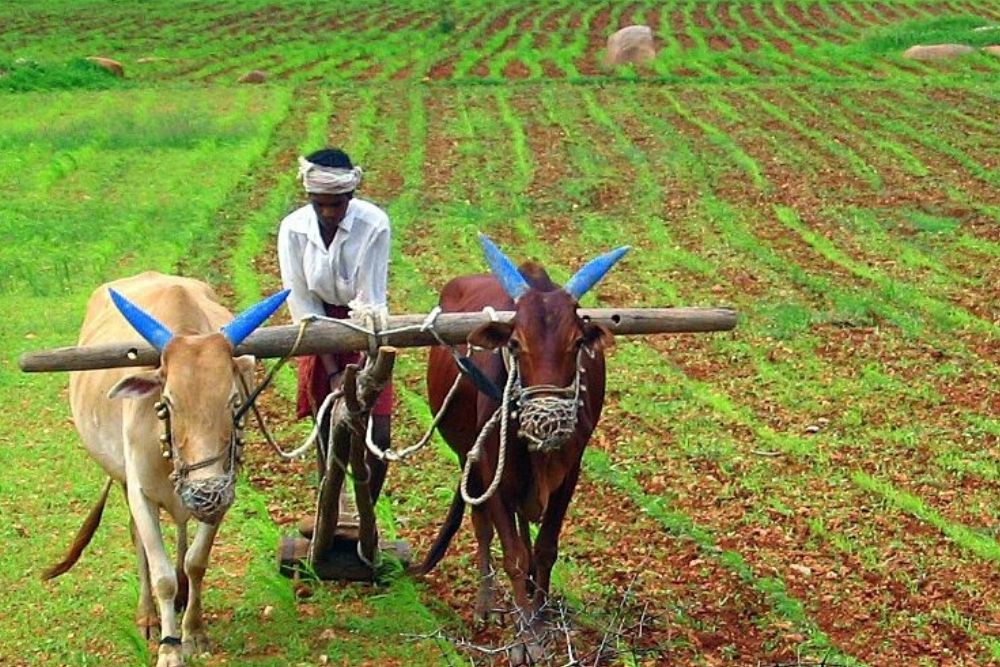
Indian farming is an important part of the country’s economy. It contributes to about 15% of India’s gross domestic product (GDP) and employs more than 50% of its workforce, according to a report from the International Monetary Fund (IMF). But despite its economic importance, agriculture has been declining in recent years due to various factors including climate change and poor infrastructure.
The state of Indian farming has become a hot topic in recent months as farmers across several states have protested against their governments over issues ranging from higher prices for crops to lack of access to water resources
Indian farmers have to deal with a number of economic factors that affect their ability to make a living. One issue is the price of corn, which has been steadily decreasing since 2009. This means that Indian farmers are getting less money for their crops than they used to.
Another problem is that many subsidies are given out by the government and large corporations, which makes it harder for small-scale farmers like Singh to compete in the market because they can’t afford these expensive products or services (like fertilizers).
Climate change is already having a significant impact on farmers in India. Extreme weather events like floods, droughts andones are more frequent, causing crop losses and reduced yields for farmers. According to the National Disaster Management Authority (NDMA), between 2004 and 2016 there were 1,826 natural disasters in India–an average of around one every three days.
The cost of climate change is estimated at around US$1 trillion per year globally by 2030 if no action is taken against it now–and this could rise to US$2-4 trillion by 2050 if we continue down our current path without any changes to our current trajectory
Today’s farmers have access to a wide range of technology that can help them improve their efficiency and productivity. Tractors, combinevesters, seed drills and irrigation systems are just some examples of the many technologies available to Indian farmers. Chemical fertilizers and pesticides are also widely used by modern-day farmers as they provide quick results in terms of yields and crop protection.
The impact of globalization on Indian farmers is a complex issue. On one hand, it has given them access to new markets and opportunities for growth; on the other hand, it has also brought about increased competition from foreign producers who are able to sell their products at lower prices. In addition to this issue with globalization comes trade policies that often favor developed countries over developing ones like India.
In addition to these problems with international trade policies, there are other factors contributing to the decline in agriculture in India:
Indian farmers are facing a number of challenges. One of the biggest issues is government intervention, which has led to overproduction and distortion of market signals. The government provides subsidies for many crops, including wheat and rice–the two most important staples in India’s diet. These subsidies have resulted in increased production levels by farmers who rely on them as an incentive to grow more crops than they otherwise would have grown had there been subsidy program at all.
However, when there are too many goods available for sale on the market (such as wheat), prices drop because there isn’t enough demand from consumers who want those products at that price point; this leads manufacturers/farmers/wholesalers etcetera down into a vicious cycle where they lose money due to low prices but continue producing anyway because they think that if they stop producing then it will only get worse!
The lack of workers is a serious issue for Indian farmers, who often struggle to operate at full capacity. As the population ages and the younger generation moves away from rural areas, farmers are left with few options when it comes to finding help. They can either hire migrant workers or rely on family members who live nearby. But either way, they’re still limited by how many people they can bring onto their farms because of immigration laws that restrict foreign labor in India.
The social stigma attached to farming is another issue that needs to be addressed. In India, there are many people who consider farming as a low-caste job. This has been a result of colonial times when the British rulers considered farmers inferior and did not allow them to participate in politics or other activities that were reserved for upper castes.
In addition, lack of modern amenities such as electricity and irrigation facilities make it difficult for farmers to produce more crops and increase their income levels.
The cost of production is one of the major issues facing Indian farmers. The cost of inputs such as seeds, fertilizer and pesticides has increased significantly over the years due to various reasons like climate change and fluctuating commodity prices. In addition to this, there are other factors such as lack of irrigation facilities and availability of quality seeds that make it difficult for farmers in India to produce enough food at affordable prices.
To tackle this issue we need alternative methods such as organic farming where there are no chemicals used during cultivation which helps them save money on fertilizers etc., but it also increases their labor costs since they have to do everything manually instead of using machines like tractors etc., which means more time spent working outside in fields rather than sitting inside homes doing nothing all day long (like most people do nowadays).
Indian farmers are often stereotyped as being uneducated and lacking the necessary skills to succeed in the modern world. This is not true, however, as many farmers actually have college degrees and have worked hard to get where they are today. However, even with these qualifications, many farmers still face discrimination when trying to find jobs outside of farming because they are still seen as low-income workers who do not deserve much respect from others.